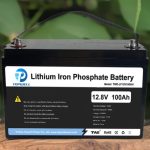For a vehicle to last a long time, certain maintenance procedures must be followed. You can engage in a variety of procedures to provide prolonged service. Your car will function properly once some worn-out components are replaced. Look for high-quality components that will provide you more service time.
For the greatest bulbs and lighting components for your car, go to xenons4u.co.uk. Your car’s engine is a crucial component that requires proper maintenance. Search for the correct gasoline for your engine, and change your oil regularly.
AdBlue is an additive necessary for some particle filters to operate properly, and it may be used in your car if it has a diesel engine. Or perhaps you’re considering purchasing a diesel that use this technique. Even if you own a diesel engine, you might not be aware of whether or not AdBlue is compatible with it. In either case, reading this AdBlue tutorial will help you comprehend how to prolong the engine’s lifespan, prevent particle filter damage, perform necessary maintenance, and avoid getting stuck!
Describe AdBlue.
To comply with pollution control laws, AdBlue is an additive used in cars with diesel engines and particle filters. Without this technology, some people would not do it. Some are already utilising it to get a jump start on the upcoming new regulations. Both diesel passenger cars and trucks, buses, and specialised machines use it.
AdBlue is essentially a chemical made of a demineralized water and urea solution. Usually, the ratio is 67.5% urea and 32.5% water. It has the appearance of a colourless, odourless liquid, and the features of this substance are governed by a specific standard at the European level (initially DIN 70070, replaced by ISO 22241).
AdBlue has a pH of roughly 9.5 and a melting point of -11 degrees Celsius. It is not explosive or flammable, and it poses no threat to human health or the environment. Although it is not dangerous, it is best to handle it with gloves because it is corrosive.
What AdBlue Does
It is employed to lessen nitrogen oxide emissions from engine exhaust. As the nitrogen in the air is oxidised by combustion at high temperatures, certain nitrogen oxides are created.
Certain diesel engines utilise a unique decontamination system to get rid of the nitrogen oxides (NOx) and other dangerous substances that are in the exhaust fumes. A DeNOX oxidation catalyst and a DPF particulate filter typically make up the system. NOx is converted into water and nitrogen, which are not toxic and can be discharged into the atmosphere, using the purification system and what is known as a selective catalytic reduction (SCR).
AdBlue functions as a “accelerator” for the reaction that takes place in the DeNOX catalyst by reacting by releasing ammonia when it is injected and comes into contact with the exhaust gases at a high temperature. This makes it easier for nitrogen oxides to be converted into free nitrogen and water.
Reasons of AdBlue Malfunction and How to Identify It
Engine failures are not brought on by the system per se, but of course the system itself could have issues. Nothing is susceptible to wear, corrosion, etc. because it is a chemical reaction (unlike the particulate filter, which is a physical filter). The urea injector, the tank level sensors, and the control unit are just a few examples of the additional complications that can result in damage. Just because they don’t exist, cars without AdBlue cannot have such a malfunction.
It is advised to get in touch with the workshop as soon as possible if the “Service” or “Urea” warning light illuminates when operating the AdBlue system attached to the SCR selective catalyst. Many factors, including the following, can lead to an AdBlue malfunction or failure.
- A mistake in the AdBlue level or counter reading;
- Aleak in the pipes feeding the SCR injector;
- A broken AdBlue pump.
mistake P20E8
A diagnosis of the vehicle is typically used at the workshop to confirm AdBlue malfunction or failure. The DTC code P20E8 most frequently indicates an issue with the AdBlue system’s operation. A skilled auto mechanic is aware that the low pressure of the additive is the most typical cause of AdBlue failure. Finding the reason why the AdBlue system is malfunctioning is the issue. The AdBlue delivery pump to the SCR injector is the first suspect to show up on the dock at the workshop. Failure that, if proved, would necessitate replacing the AdBlue pump at a far higher price than the potential sources of AdBlue dysfunction
Mistake P20E8
A diagnosis of the vehicle is typically used at the workshop to confirm AdBlue malfunction or failure. The DTC code P20E8 most frequently indicates an issue with the AdBlue system’s operation. A skilled auto mechanic is aware that the low pressure of the additive is the most typical cause of AdBlue failure. Finding the reason why the AdBlue system is malfunctioning is the issue. The AdBlue delivery pump to the SCR injector is the first suspect to show up on the dock at the workshop. Failure that, if proved, would necessitate replacing the AdBlue pump at a far higher price than the potential sources of AdBlue dysfunction
- Faulty AdBlue pumps
- Damage to the AdBlue pipes or poor sealing
- AdBlue injector on the SCR system has a faulty seal or other issue (exhaust line)
How to Correct the Issue
It is strongly advised against starting a DIY project and to get in touch with the workshop right away. But it can also be intriguing to know how a system works that needs AdBlue recharging around every 6–20,000 kilometres (depending on the model). Also, the methods used to diagnose defects can differ from one car to another. Yet, because it is a very common system, the AdBlue fuel pump is typically where the diagnosis of an AdBlue issue begins.
An expert auto mechanic will know how to proceed once they have determined whether the AdBlue failure is due to inadequate flow. In most cases, they will cut the hose from the injector and collect the AdBlue in a graduated cylinder for the duration of the tester-specified time in order to measure the flow of AdBlue that the pump supplies to the injector.
If the flow is proper, the SCR’s AdBlue injector malfunction must be suspected as the cause. If the flow is below the manufacturer’s theoretical values, the possibility of an AdBlue pump malfunction or an AdBlue leak from the tank to the SCR arises. The best remedy for AdBlue problems is a new NOx sensor.
You can also read about:The Top 8 Vehicle Cleaning Errors People Made in 2023










